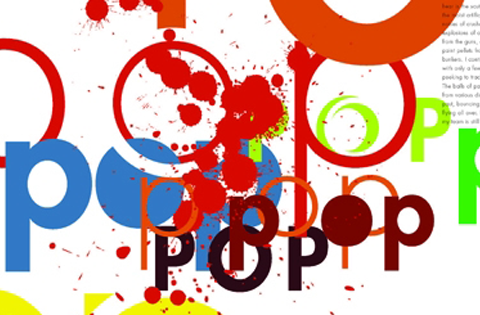| |
Jan 17, 2025
|
|
|
|
|
2012-2013 University Catalog [Archived Catalogue]
Graphic Design, Bachelor of Fine Arts
|
|
Programs > Programs in the College of Art, Media, & Design
Contacts Description Learning Objectives Program Requirements

Quick Links
College of Art, Media & Design
School of Design
Liberal Arts Distribution
Contacts
Chris Myers \ cmyers@uarts.edu \ 215.717.6226
Program Director
Description
The Graphic Design program delivers a professional degree that develops the student’s mastery and expertise in the current marketplace for the practice of graphic design or a related communications-oriented field. Graduates will have experienced both hierarchical and non-hierarchical forms of collaboration as professional preparation, as well as the development of a unique intellectual and visual voice. Graduates will also possess the flexibility to adapt to a changing, unpredictable world and its communication needs where the methods of communication can be expected to evolve and expand.
Learning Objectives
- Teach students through paradigms rather than through projects. Train students as generalists within the field of visual communication to provide them with flexibility both within the culture of professional practice and in the evolving communications milieu of a shrinking, yet increasingly differentiated world.
- Teach students from context throughout the curriculum, providing an introduction to human centered, cultural, and systemic contexts.
- Evolve student-centered teaching strategies and apply them to students’ design processes.
- Develop in students a strong work ethic driven by both logical and inventive working processes.
- Develop student’s self-critical abilities.
- Expose students to audiences that reflect diverse sensibilities or backgrounds. Evolve an ethical framework based upon an obligation to others, especially to those unlike themselves.
- Provide experiences for students that model or expose various forms of collaborative, both hierarchical and non-hierarchical.
- Develop in students a high level of expertise within industry-standard technological environments. Develop the propensity to prototype for high-level, complex technologically-based practices.
- Introduce strategic thinking and the ability to explain these strategies as a fundamental aspect of their design process.
- Develop the unique and individual voice of the student, both the intellectual and visual invention.
Program Requirements (126 credits)
|
CAMD College Core (18 credits)
Image/Time
- Select 1 course from subjects: IMAG or TIME
Object/Environment
- Select 1 course from subjects: OBJT or ENVI
Image/Time/Object/Environment
- Select 2 courses from subjects: IMAG, TIME, OBJT, or ENVI
CAMD School Core (6 credits)
All CAMD students are required to complete 6 credits of School Core coursework during their first three semesters. Students are free to select courses from any school or cross-college program. Refer to the CAMD School Core page for additional information. Illustration (Cross-College Program)
Major Requirements (39 Credits)
Discipline History (12 credits)
Liberal Arts Distribution (30 credits)
First Year Writing (6 credits)
- or 3 credits
- or 3 credits
Humanities Seminar (3 credits)
- Select 1 course from subject HUMS
Period Interpretation (6 credits)
- Select 1 course from subject LAPI, level 800
- Select 1 course from subject LAPI, level 900
Scientific Inquiry Foundation Track (3 credits)
- Select 1 course from subject LACR, level 200 excluding LACR 210
Liberal Arts Electives (12 credits)
- Select courses from subjects: HUMS, LAAH, LALL, LAPR, LASM, or LASS
- Select courses from : Art History or LA Elective.
Electives (21 credits)
- Complete 21 credits of free electives. This requirement is satisfied by any undergraduate course that isn’t required by the program.
|
|
|